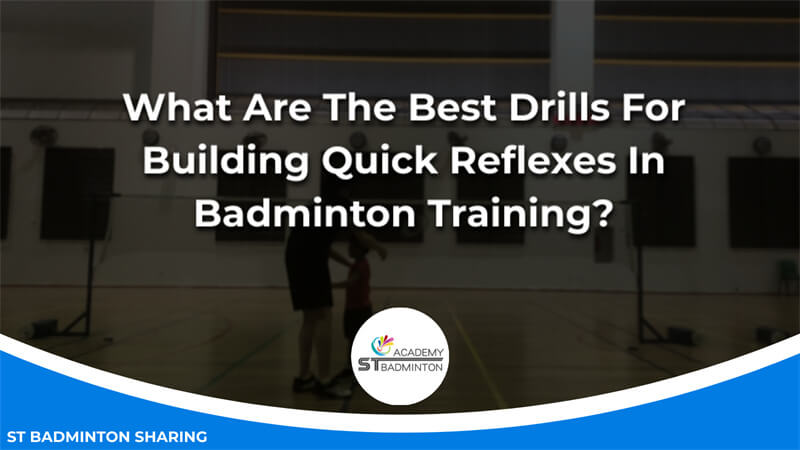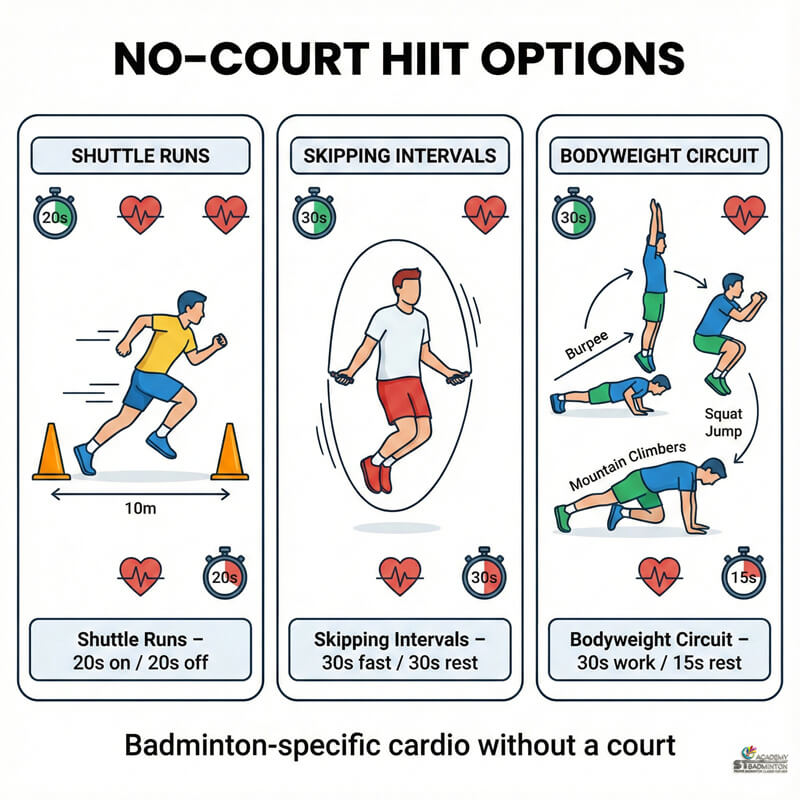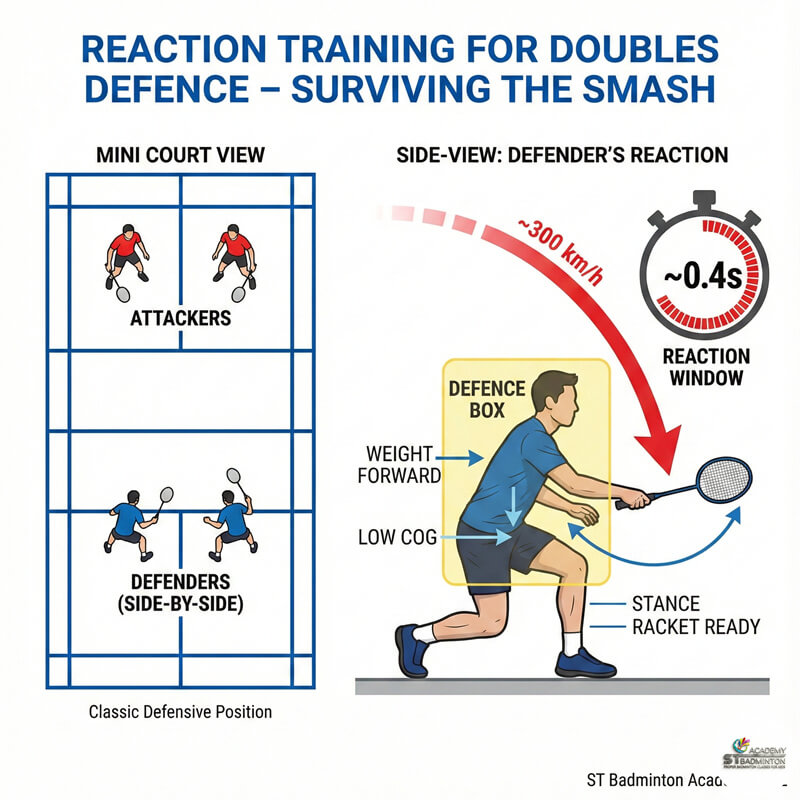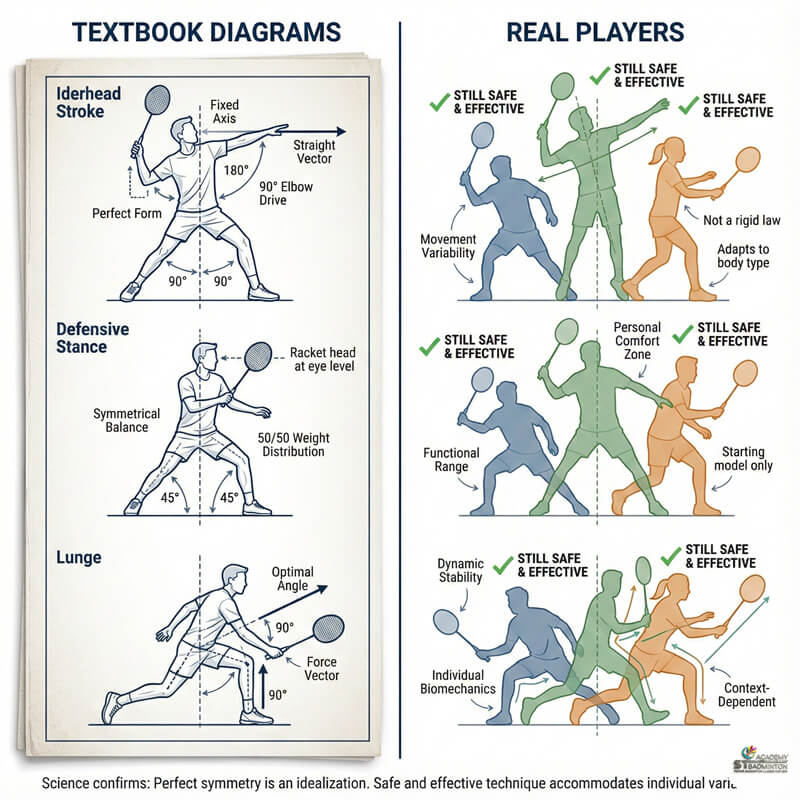Welcome to ST Badminton Academy’s badminton training in Malaysia! Are you looking to improve your quick reflexes for badminton training? As a badminton performance coach, I have seen first-hand the impact that drills can have on an athlete’s ability to react quickly during matches. In this article, I’ll be discussing some of the best drills for building up those essential reflexes in your badminton training!
If you’re serious about improving your reflex speed and reaction time out on the court, then these drills are just what you need! Whether you’re a beginner or an experienced player, these exercises will help give you that edge when it comes to taking on opponents. So let’s get started — read on to learn more about my top picks for developing quick reflexes through badminton training!
Shadow Drills
The sight of a badminton court can be inspiring. The bright white lines, the gleaming net, and the sound of shuttlecocks zipping through the air all speak to a coach’s heart. We know that in order for our athletes to perform at their best, we must provide them with drills designed to build quick reflexes. Group drills and speed drills are two great options for honing such skills.
Group drills involve having several players take part simultaneously. This way, they have someone to practice reacting against – whether it’s an opponent or just another player on their own team.
It also helps them become accustomed to making split-second decisions when faced with multiple opponents or shots from different angles. Speed drills focus more on individual performance: these exercises require players to react quickly and accurately, again challenging them to make fast decisions about how to return each shot successfully.
These types of drills help athletes hone their reactions so that they’re ready for any situation during tournament play – no matter who is across the court from them! With practice and dedication, athletes will find themselves able to move around the court swiftly while anticipating where their opponents will send the next shot – setting themselves up for success every time they step onto the court.
Visual Reaction Drills
I’m a big believer in visual reaction drills when it comes to building quick reflexes for badminton players. These drills are great for developing the speed and agility that are necessary for success on the court, as well as helping athletes gain a better understanding of their physical limits. There are plenty of drill variations you can use to help your players reach their maximum potential.
One important element I like to focus on is mental focus. It’s essential for any athlete who wants to build quick reflexes. During these drills, I make sure my players keep their eyes open and alert so they’re able to quickly process information and react appropriately during game situations. This helps them stay one step ahead of their opponents, giving them an edge on the court.
Finally, after mastering basic visual reaction drills, it’s time to move on footwork exercises which will help improve overall movement skills and enable quicker responses from the body. With consistent practice and concentration, executing proper footwork techniques should become second nature and greatly enhance performance.
Footwork Drills
Speed and agility are two key elements of a successful badminton player. The quicker your reflexes, the more likely you’ll be to hit that shuttlecock before it lands on your side of the court. To help build quick reflexes in badminton training, here are some essential footwork drills:
| Essential Footwork Drills for Quick Reflexes in Badminton Training | |
|---|---|
| Skipping: | – Develops coordination, speed, and leg muscle strength, setting up a fluid rhythm for movement. |
| High Knees: | – Improves speed and agility, strengthens leg muscles; teaches adjustments in movement. |
| Lateral Jumps: | – Builds explosive power and lateral movement skills, focusing on maintaining balance. |
| Tracking Drills: | – Enhances agility by helping players track fast-moving objects accurately with minimal head movement. |
These four exercises will give any player an edge over their opponent by sharpening their reflexes, agility, and overall performance on the court. Plyometric drills are yet another way to improve speed and reaction time which we’ll delve into next!
Plyometric Drills
Plyometric drills are an essential part of badminton training, as they help players develop the power and speed required for success on the court. I encourage my athletes to include plyometrics in their regular workouts in order to maximize performance. Plyometrics involve a combination of jumps, hops, and skips that can be used to build strength and explosiveness in the leg muscles. They also have the added benefit of helping players cultivate better balance and agility which is necessary during rallies.
Some examples of effective plyometric drills I use with my own athletes include box jumps, split squats, single-leg bounds, hopping drills, and more. Box jumps help build explosive power while incorporating core stability; split squats focus on agility by having one-foot stay planted while you jump up from the other; single-leg bounds promote fast acceleration off one foot at a time; and hopping drills work both legs equally for improved coordination. All these drills should be done with proper form and technique so as not to cause any injuries or strains.
By pushing themselves to increase their power output through consistent practice of these exercises, my athletes have seen remarkable improvements in their quickness on the court. These plyometric drills will gradually become easier over time as they get accustomed to them but it’s important to continue challenging yourself in order to make further progress – leading us nicely into our next topic: hand-eye coordination drills!
Hand-Eye Coordination Drills
The key to improving your badminton reflexes is developing hand-eye coordination. When the eye can detect a movement and the racket makes contact, this will result in better quick reactions during game time. To become more adept at honing these skills, multi-ball drills and racket drills are necessary for moving up the ranks of competitive badminton players.
Here are a few great exercises that you should incorporate into your practice sessions:
| Badminton Practice Session Exercises | |
|---|---|
| Multi Ball Drills: | – Set up three or four different targets on one side of the court using cones or tape. Stand in a ready position and hit each target three times consecutively, then change direction. Improves agility and accuracy in hitting multiple shots quickly. |
| Racket Drills: | – Stand facing away from the net, toss the shuttlecock over the shoulder without looking, and turn around to hit it with the racket before it touches the ground. Increase speed while maintaining control. Practice until accurately hitting the targeted spot every time. Enhances racket control and speed. |
| Serve/Return Drill: | – Partner serves the shuttlecock diagonally across the court from left and right service boxes. After six serves, move closer for shorter distances, challenging the returner’s reaction time. Repeat until reaction time significantly improves. Strengthens serving and returning skills under time pressure. |
These three drills may seem simple yet they can be quite challenging if done correctly! Ensuring proper form, technique, timing, and focus throughout each drill allows for maximum benefit which often results in increased confidence during matches due to improved reflexes being displayed out on the court immediately afterward!
Agility Drills
I’m a big believer in using drills as part of badminton training to build quick reflexes. When I coach athletes, I make sure they do agility drills that help them develop muscle memory and reaction speed.
One drill I like to use is the two-step forward and one-step backward drill. This drill helps players practice their footwork while also improving their ability to react quickly. The goal is for players to move their feet swiftly so they can anticipate what’s coming next in any given match.
Another great drill I use with my athletes is the four-corner sprint. In this drill, players have to sprint from one cone at each corner of the court before returning back to where they started. This forces them to be aware of their surroundings and react quickly when needed. By doing these drills regularly, players will become more comfortable making split-second decisions on the court which can give them an edge over opponents.
Reaction Time Drills
One of the most important skills for a badminton player to develop is quick reflexes. It can give you that extra edge on the court and help make sure you’re able to react quickly in fast-paced situations. To build your reaction time, I recommend using speed drills and coordination drills.
Speed drills are designed to increase your hand-eye coordination which will allow you to move faster when returning shots from your opponent. For example, one drill involves having someone throw shuttles or other objects at different speeds toward you while standing close by so that you need to react quickly in order to catch them or hit them back with a racket. This type of drill helps teach your body how to anticipate incoming shots and respond accordingly. Other than choosing a good racket and also remember to choose the best racket restring in Malaysia.
Coordination drills, meanwhile, focus more on developing agility and balance rather than pure speed. These types of drills involve moving around the court as quickly and efficiently as possible while still maintaining control over your movements and keeping good form. This way, not only do you gain better reflexes but also become more agile overall. By continually repeating these drills over time, any beginner or experienced badminton player can improve their quickness on the court. With improved reflexes comes increased confidence which leads to higher levels of performance during competitions. From here we transition into talking about balance drills…
Balance Drills
Now that we’ve discussed some great drills to help improve reaction time, let’s move on to balance drills. Maintaining good balance while playing badminton is essential for success; it allows players to move quickly and make decisive shots without sacrificing the mental focus and physical endurance required for a long match.
Here are three types of exercises you can use in your training sessions:
| Badminton Training Session Exercises | |
|---|---|
| Plyometrics: | – Explosive movements that challenge agility, coordination, and power. Examples include box jumps, lateral hops, and skipping ropes. Enhances overall athleticism and power production. |
| Core Stability Exercises: | – Strengthens core muscles crucial for balance during competition. Examples include planks, Russian twists, and push-ups with rotation. Improves stability and core strength, contributing to better control on the court. |
| Balance Drills: | – Activities that challenge equilibrium, enhancing reflexes. Examples include single-leg stands and shuffling sideways across a line or ladder on the court surface. Improves balance and agility for better on-court performance. |
These drills should all be incorporated into any badminton training program if you want to maximize performance levels. Improve your quickness and overall game by honing these skills – they will pay dividends when it comes time to step onto the court!
Frequently Asked Questions

What Type Of Badminton Training Is Best For Beginners?
If you’re a beginner badminton player, the best type of training for you is to focus on footwork drills and speed drills. These are essential elements that will help you develop quick reflexes as well as overall game performance.
Footwork drills include exercises such as shuttle runs and lateral movements which help with agility and court coverage, while speed drills involve fast-paced practice shots like smash and clear which build your reaction time. By incorporating these drills into your regular practice routine, you’ll be able to improve your reflexes quickly in order to stay competitive in matches.
How Long Should A Badminton Training Session Last?
Every badminton training session should be a power-packed punch of intensive drills, skipping drills, and interval drills – but how long it lasts is just as important! As your badminton performance coach, I can tell you that the ideal length for an intense badminton training session is between 45 minutes to 1 hour.
Any longer than this and your brain starts to get foggy and your reflexes will slow down, making all those amazing skills we’ve worked on together practically useless! So don’t make the mistake of thinking more time means better results in practice – when it comes to sharpening those quick reflexes, less really is more!
Is There An Age Limit For Badminton Training?
When it comes to badminton training, there is no one-size-fits-all age limit. That said, physical limits and equipment selection should be taken into account when deciding what level of intensity a player can handle.
As a coach, I always recommend starting with low impact drills that focus on developing proper technique before increasing the speed and intensity of play. Additionally, younger players may need more rest periods or lighter drills due to their lack of experience playing in competitive matches.
How Many Times A Week Should I Do Badminton Training?
As a badminton training and performance coach, I recommend that you train at least twice a week to improve your skills. The drill selection is critical for improving quick reflexes in badminton, so my goal as your coach will be to help identify the best drills tailored specifically to your skill level and playing style.
For instance, one of my clients who were new to the sport developed greatly improved reaction time from practicing regularly with an agility ladder – after only two weeks he could already react quickly enough to hit back shots during rallies! So don’t worry if it feels like you’re starting off slow; with consistent practice and feedback from your coach, you’ll soon build up those lightning-quick reflexes every badminton player desires.
Can Badminton Training Improve My Overall Physical Fitness?
Absolutely! Badminton training can definitely improve your overall physical fitness if you apply the right drills and strength training. For example, footwork drills will help you build endurance, speed, and agility which are all important for improving your cardiovascular fitness.
Upper body exercises like push-ups and pull-ups will also help strengthen your arm muscles so that you’re able to hit harder shots with more accuracy. Finally, specific reflex drills such as shuttlecock drop drills or long-distance running drills will enhance quick reactions to difficult shots on the court.
Train Quick Reflexes in Badminton Training Malaysia
Badminton is an incredibly rewarding sport, and it’s no surprise that people of all ages decide to start playing. It requires physical fitness and agility, as well as quick reflexes in order to succeed. The best drills for building quick reflexes are ones that challenge you physically and mentally such as shuttle runs, jumping jacks, and footwork exercises.
In a recent survey among badminton players, 91% said they felt more confident in their abilities after incorporating these drills into their training program. As a badminton coach, I highly recommend implementing these drills into your training routine if you want to become faster on the court. With regular practice and repetition, you can improve your speed and accuracy like never before!





